 |
|
|
|
|
|
|
|
 |
 |
 |
 |
|
|
 |
 |
 |
|
|
 |
 |
 |
Posted: |
Jul 17, 2017 - 11:45 AM
|
|
|
|
By: |
Bob DiMucci
(Member)
|
As announced in 1980, director George Romero's production company, The Laurel Group, had agreed to a three-picture deal with United Film Distribution (UFD) which included financing for the third film of Romero’s “Dead” trilogy, with the understanding that production would not begin on DAY OF THE DEAD for a year or more. The deal allowed Romero creative rights to the film's final cut, as well as advertising approval for the picture.
The film focused on a small group of military officers and scientists who dwell in an underground bunker as the world above is overrun by zombies. Lori Cardille starred as a researcher named “Sarah.” In their base camp, a science facility within an underground mine, the scientists worry about the security of their camp, and tensions escalate between the scientists and the military group assigned to protect them, led by “Captain Rhodes” (Joe Pilato).
Principal photography began on 22 October 1984 in Pennsylvania, and a summer 1985 release was expected. The budget for Romero's original script was estimated at $7 million, but the producers only offered that amount if Romero could create an R-rated film. He was told that if he went ahead and shot an unrated film with no limits on gore, the budget would be cut in half to $3.5 million. Romero decided to go the “unrated” route, and a feature article in the 16 December 1984 Los Angeles Times cited a $4 million budget for the film.
A total of five scripts were written as Romero wrestled with the film's concepts and the budgetary constraints. The first draft was over 200 pages, which he later condensed to 122 pages. This is the true original script, and to date, copies of it have not come to light. This version was likely rejected because UFD felt it was too expensive for them to produce even with an [R] rating. Romero subsequently scaled down the scope of the film into a 165-page draft (often erroneously referred to as the original version), then condensed it again to a 104-page draft labeled the “second version, second draft” in an unsuccessful final attempt to get the story within budget parameters. When this failed, he drastically altered the original story concept yet again, and ultimately produced a shooting draft that numbered only 88 pages.
Underground scenes were filmed in a former mine shaft located near Wampum, PA, which had been converted into a long-term storage facility for important documents. Though the mine maintained a constant temperature of about 50 degrees Fahrenheit, its high humidity played havoc with the crew's equipment and props. Mechanical and electrical failures were a constant problem throughout filming, and caused several of Tom Savini's props to fail during the filming. Despite these failures, Savini was nominated and won the 1985 Saturn Award for best makeup effects. The remote location also complicated the transportation of crew members and equipment. Cast and crew would often sleep in the mine overnight to avoid the time-consuming travel to and from the shooting location.
Three hundred locals acted as zombies for three days of filming in Fort Myers, Florida, in December 1984, and were paid only $1 for each of their twelve-hour shoot days. Gary Brotz, responsible for hiring background actors, reported that no one complained about the low rate, although the wage was a violation of the Fair Labor Standards Act, which set the minimum wage at $3.35 per hour at that time. Brotz claimed many were willing to pay filmmakers for the chance to be in the picture, and hundreds of the 600 locals were denied the chance to play zombies. The "dollar-a-day" rate was reportedly set to qualify locals for Workman's Compensation, had any injuries occurred while filming. Several officials disagreed with the unlawful pay rate, but no action was taken against the filmmakers, and Brotz and several others argued that Florida laws did not require a minimum wage for film production. (The extras also reportedly received a cap that said "I Played A Zombie In 'Day of the Dead'", and a copy of the newspaper from the beginning of the film--the one that says THE DEAD WALK!.)
The picture opened in New York City on 3 July 1985, but would not be released on the west coast until 4 October 1985, due to high costs of the summer film market. The film took in $5.8 million in the U.S. during its initial run, making it the lowest grossing film in Romero's "Dead" trilogy. But worldwide earnings to date have bumped up total receipts to $34 million. Romero claimed this to be his favorite film out of the original "dead” trilogy.
DAY OF THE DEAD marked the last time that Romero and Richard P. Rubinstein worked together as a director/producer team. Romero wrote the scripts for (but did not direct) CREEPSHOW 2 (1987) and TALES FROM THE DARKSIDE: THE MOVIE (1990), which Rubinstein produced.
Music from the film (background score by John Harrison, along with songs featured in the film) was released on a Saturn Records LP. Harrison’s score was expanded for a 2002 Numenorean Music CD, and further expanded for a 2013 La-La Land release.
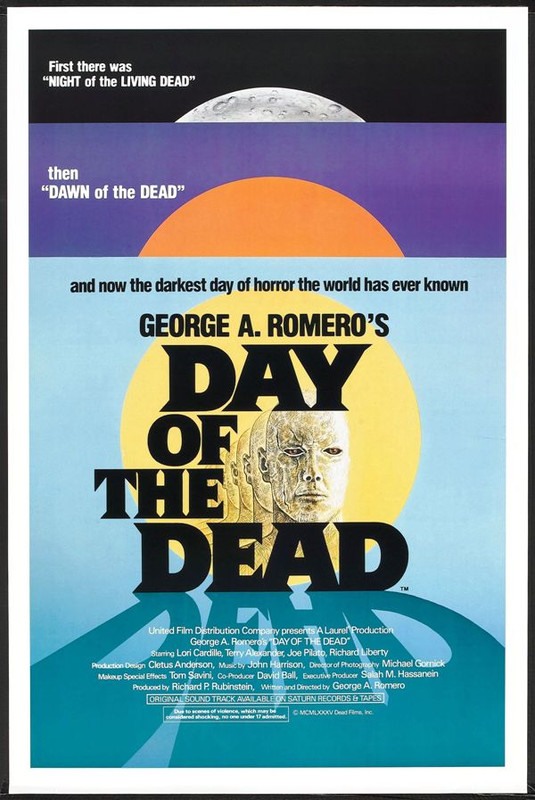
 |
|
|
|
|
|
|
|
|
|
 |
 |
 |
Posted: |
Jul 17, 2017 - 2:20 PM
|
|
|
|
By: |
Bob DiMucci
(Member)
|
In MONKEY SHINES, a quadriplegic man has a trained monkey to help him with his paralysis, until the little monkey begins to develop feelings, and rage, against its new master. The film opens with the written prologue: “The Helping Hands program at Boston University trains capuchin monkeys to assist the disabled. The monkeys in this film were trained using many of the basic techniques pioneered by the program. Although some sequences may appear traumatic, no monkey was harmed in any way.” End credits state: “The preceding film is a work of fiction, in no way intended to detract from the extraordinary success of the Helping Hands program at Boston University. None of the incidents portrayed have ever been recorded in the ten year history of the program.”
In May 1984, it was announced that author Michael Stewart’s 1983 novel, Monkey Shines, was optioned by MGM/UA for $20,000. On 21 November 1984, the Hollywood Reporter added that the option deal included film rights to a second Stewart story, Far Cry (1984), and the purchase of both literary sources cost $200,000, including a percentage of the two future films’ box-office grosses. Seven months later, MGM/UA’s option had expired, and producer Charles Evans, brother of film industry mogul Robert Evans, purchased screen rights to Monkey Shines. Evans entered into a distribution deal with Orion Pictures.
Romero began principal photography on 31 July 1987 in Pittsburgh. Filming occurred in Murrysville, PA and at The Mellon Institute at Carnegie Mellon University in Pittsburgh. Filming extended into late October 1987, under a budget of $7 million. Orion set the release date of the film at 29 July 1988, and noted the title would be changed to “Monkey Shines: An Experiment in Fear,” after sixteen different titles were tested on the public. A 2 June 1988 Los Angeles Herald Examiner brief mentioned that 40,000 people were surveyed by telephone about the film’s title. Despite the added tagline, the film commonly goes by the title MONKEY SHINES.
Along with a change in title, Orion insisted that writer-director Romero change the picture’s ambiguous conclusion to a happier ending. Romero protested, but the film was revised anyway. The film received generally mixed reviews, and flopped at the U.S. box office, grossing only $5.3 million. David Shire’s score for the film was released by Film Score Monthly in 2002.
Producer Charles Evans had been concerned about the film being the subject of animal mistreatment allegations, like those leveled against the 1987 film, PROJECT X. These did not materialize. However, the film and its advertisements were instead criticized by the disability rights organizations ADAPT and Adapting Society. Although Orion Pictures co-founder Mike Medavoy met and told group representatives that certain taglines would be removed from the film’s print advertisements, members of ADAPT formed a wheelchair picket line at the Hollywood Pacific Theater on 30 July 1988. By 10 August, Orion was issuing an apology, removing content from the film’s media advertisements deemed objectionable, and agreeing to confer with consultants with disabilities for up-coming projects.
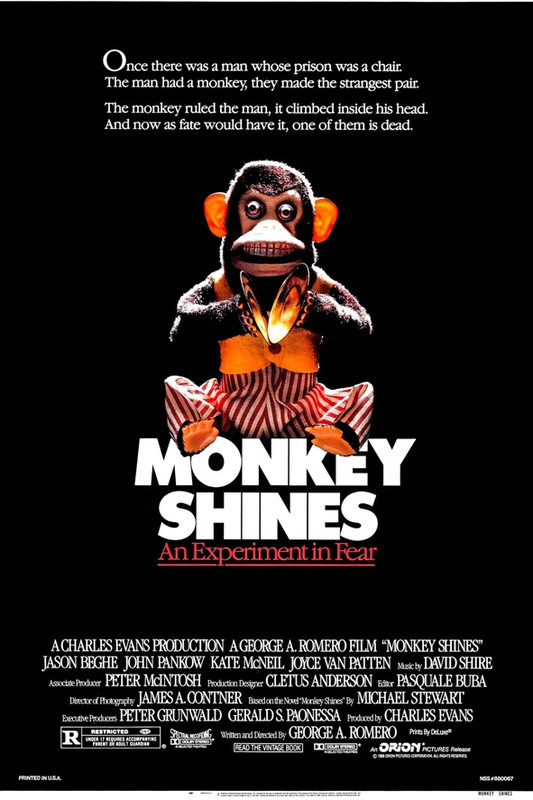
 |
|
|
|
|
|
 |
 |
 |
Posted: |
Jul 17, 2017 - 3:19 PM
|
|
|
|
By: |
Bob DiMucci
(Member)
|
George Romero and Dario Argento collaborated again on the film TWO EVIL EYES, with each of them writing and producing a single tale from the oeuvre of Edgar Allan Poe for the anthology film. Argento’s contribution was “The Black Cat,” and Romero’s was "The Facts in the Case of Mr. Valdemar.” Argento originally wanted the film to be a collaboration between four directors: himself, Romero, John Carpenter, and Wes Craven. But Carpenter and Craven pulled out, so Argento and Romero decided to tackle the project as a two-part story, each directing his own segment separately.
Romero’s stars were Adrienne Barbeau and E.G. Marshal, while Dargento used Harvey Keitel and Kim Hunter. The film was shot between 10 July and 12 September 1989. Pino Donaggio’s score for the film was released on a Ricordi LP, but has not been re-issued on CD. The Italian-U.S. co-production first opened in Italy in January 1990, but did not open in the U.S. until October 1991. American grosses for the $9 million film were disastrous, totaling under $500,000.
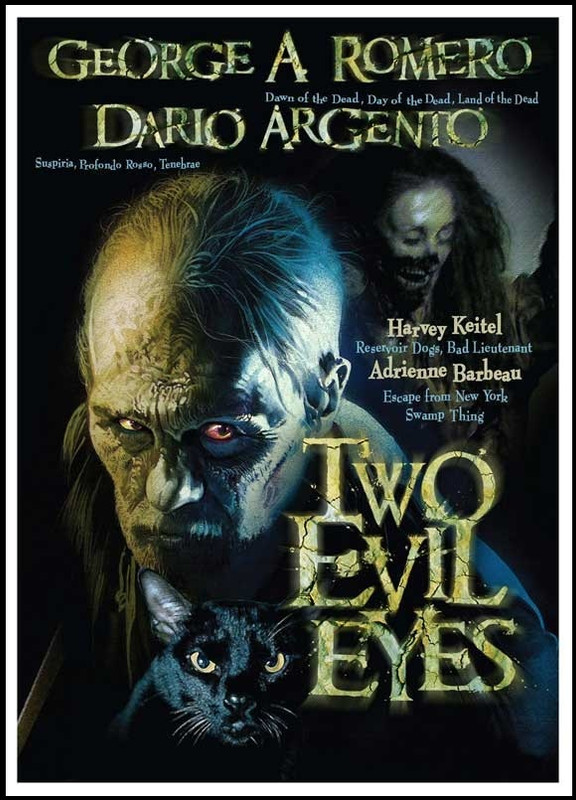
 |
|
|
|
|
|
 |
 |
 |
Posted: |
Jul 17, 2017 - 3:44 PM
|
|
|
|
By: |
Bob DiMucci
(Member)
|
Composer-actor-writer John Harrison made his feature film directorial debut with 1990’s TALES FROM THE DARKSIDE: THE MOVIE. Following the success of Stephen King and George A. Romero's CREEPSHOW, production company Laurel Entertainment toyed with the idea of a “Creepshow” television series. After several negotiations and changes (due to rights holders etc.), the decision was made to change the title for the series to "Tales from the Darkside" (to be helmed by none other than CREEPSHOW director and CREEPSHOW 2 screenwriter Romero). After the series' great success, just roughly three years after CREEPSHOW 2 hit theatres a “Tales from the Darkside” movie came to fruition as the successor to the original two CREEPSHOW films, sharing many of the same crew as those films.
TALES FROM THE DARKSIDE: THE MOVIE consisted of three stories, the second of which, "The Cat From Hell" (written by Stephen King and adapted for the screen by Romero), was originally intended for CREEPSHOW 2 (1987). The story was later dropped due to budgetary reasons. Music for the film was provided by five composers, with four scoring the tales, and Donald A. Rubinstein providing music for the wraparound segments. The composers were Kim Manzie ("Lot 249"), Pat Regan ("Lot 249") Chaz Jankel ("Cat from Hell"), and John Harrison (“Lovers Vow”). GNP Crescendo released the soundtrack CD, which was re-issued on LP by Waxwork in 2016.
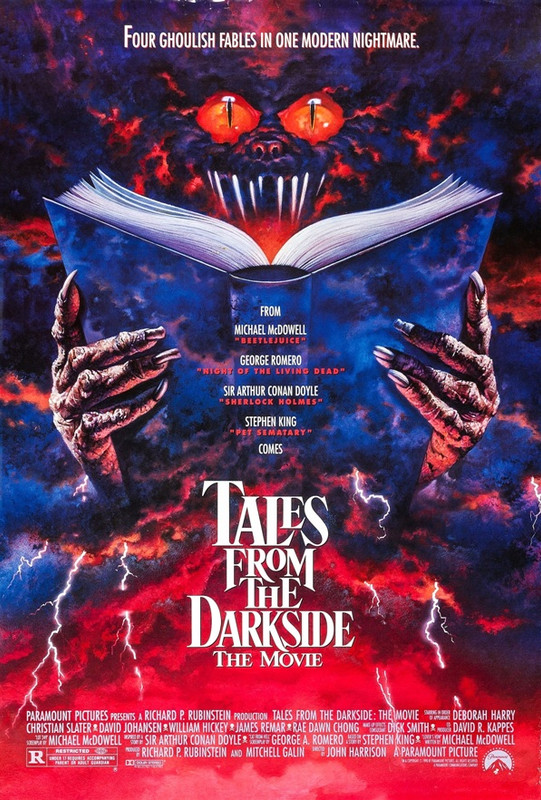
 |
|
|
|
|
|
|
|
|
|
 |
 |
 |
Posted: |
Jul 17, 2017 - 4:28 PM
|
|
|
|
By: |
Bob DiMucci
(Member)
|
Stephen King and George Romero worked together again on 1993’s THE DARK HALF, which Romero wrote and directed based on King’s 1989 novel. Romero began writing the screenplay during production of his NIGHT OF THE LIVING DEAD remake. In addition to King’s cameo appearance in Romero’s KNIGHTRIDERS (1981), the two previously collaborated on CREEPSHOW (1982) and CREEPSHOW 2 (1987), both based on the author’s works.
First-time feature film producer Declan Baldwin, who served as line producer on NIGHT OF THE LIVING DEAD, helped budget THE DARK HALF to present to Orion Pictures, which agreed to release the picture on a “negative-pickup basis.” The project was produced independently by Dark Half Productions, which was formed by Baldwin, Romero, and Romero’s wife, costume designer Christine Forrest, who served as associate producer. The story’s Maine locations were to be filmed in Romero’s hometown of Pittsburgh, PA. The male role of “Reggie Delesseps” was rewritten for Julie Harris.
Principal photography under a $15 million budget began 15 October 1990 at Washington & Jefferson College in Washington, PA. Studio space was established inside the Army National Guard Headquarters in Philadelphia, PA. The thirteen-week production schedule took a hiatus beginning 22 December 1990 for the Christmas—New Year holiday, and resumed 3 January 1991. According to Romero, star Timothy Hutton was quite difficult to work with at times. Hutton even quit the film for a few days during the production.
Roughly 4,500 Cut Throat Finches were temporarily rented for the production, substituting for the sparrows in the screenplay. The birds consumed 100 pounds of birdseed and 15 gallons of water on a daily basis during the production. According to the American Humane Association (AHA) review, documentary-style footage of birds was filmed in areas of Alabama with high populations of finches. Scenes featuring aggressive birds, including the final sequence, were simulated using mechanical birds, special effects, and animation. Handling of live birds was supervised by members of the Western Pennsylvania Humane Society, Pittsburgh Animal Care and Welfare, Society for the Prevention of Cruelty to Animals (SPCA), and the Pittsburgh Aviary.
The 18 November 1991 issue of Variety listed a fall 1992 release for the film, as one of Orion’s twelve projects for that year, each with a $10 million marketing and distribution cost, $6 million of which was covered by cash returns from the company’s continuing projects. However, the opening was delayed until 23 April 1993, whereupon the film received generally positive reviews as a faithful adaptation of King’s novel. The film was not a financial success, however, grossing only $10.6 million in the U.S. Varese Sarabande released Christopher Young’s score.
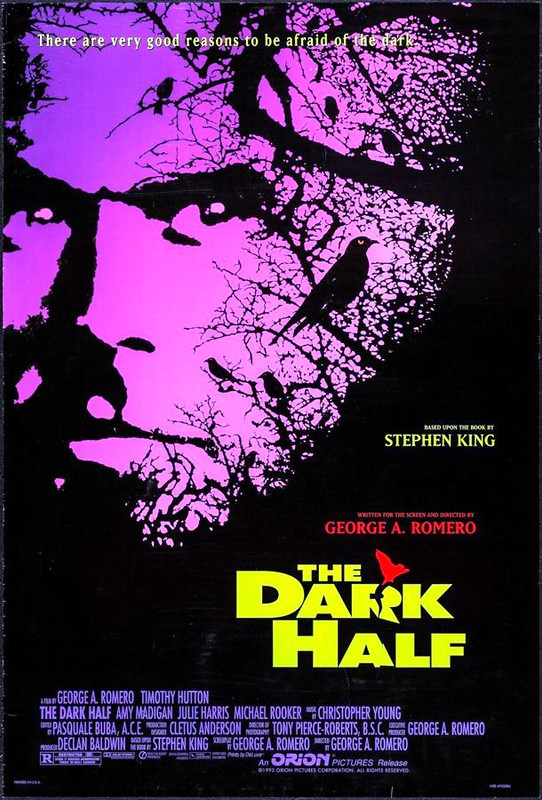
 |
|
|
|
|
|
 |
 |
 |
Posted: |
Jul 17, 2017 - 4:46 PM
|
|
|
|
By: |
Bob DiMucci
(Member)
|
After the failure of THE DARK HALF, Romero stayed away from filmmaking for seven years, returning in 2000 with BRUISER, which he wrote and directed. The film was an allegory in which, after years of being tread upon and cheated on, a man awakens to find his face has been replaced by a blank, white mask.
Breaking with his usual tradition of shooting near Pittsburgh, Romero filmed BRUISER in Canada. The film’s producers insisted on marketing it as a Romero horror film (for example, using a poster with gashes on the white face). Both Romero and his wife felt that it wasn't just a horror film but more of a story of a man who is going through difficulties in his life. After failing to find a distributor, the producers gave up on a theatrical release for the film and sold it directly to video. Donald Rubinstein released his music for the film on a promo CD in 2004.
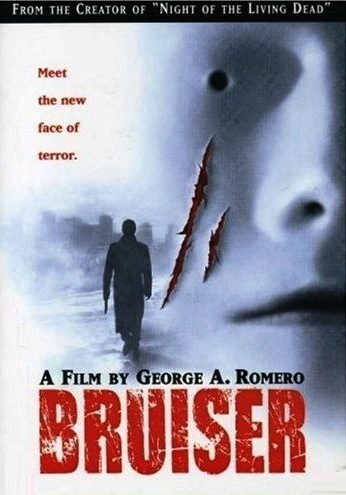
|
|
|
|
|
 |
 |
 |
Posted: |
Jul 17, 2017 - 5:11 PM
|
|
|
|
By: |
Bob DiMucci
(Member)
|
Following the debacle of BRUISER, Romero returned to the subject he knew best—zombie films. LAND OF THE DEAD found the living dead having taken over the world, with the last humans living in a walled city to protect themselves as they come to grips with the situation. Romero’s script for the film was partly based on the original, much longer script for DAY OF THE DEAD (1985).
The opening credits includes a montage detailing the zombie outbreak leading up to the events of this film, with black and white footage and radio broadcasts depicting the infection's spread over the Earth. Some of the images come from 1968’s NIGHT OF THE LIVING DEAD portraying the beginning of the outbreak. Romero wanted to use more footage from the other two films of the series up to that point, DAWN OF THE DEAD (1978), and DAY OF THE DEAD (1985), but was unable to due to complications with the rights of those films.
Romero intended to make the film in his hometown of Pittsburgh, Pennsylvania. The story is set there, and it's where he made his other zombie films. However, the producers insisted on filming in Toronto, Ontario, in order to take advantage of Canadian tax incentives. They attempted to create a setting that retains Pittsburgh's geography, using physical locations of Toronto that have been altered. During shooting, Romero discovered that a non-union zombie would make nine dollars per hour Canadian, while a union zombie, for a minimum of eight hours, would make 158 dollars Canadian. Bowing to the changing nature of special effects, this was the first film of Romero's "Living Dead" series which used digital effects.
The film opened in Los Angeles and New York on 24 June 2005. The $15 million production was a success at the box office, pulling in $20 million in the U.S. and another $26 million overseas. The score by Reinhold Heil and Johnny Klimek was released by Varese Sarabande.
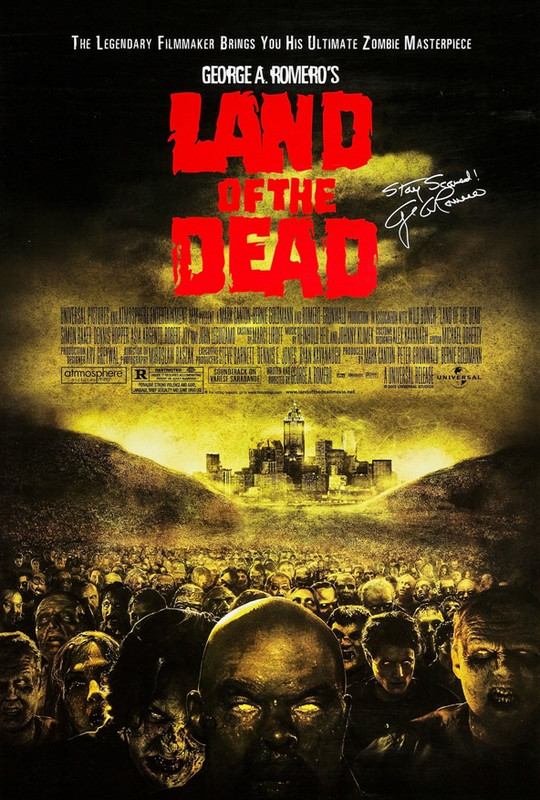
 |
|
|
|
|
|
|
|
|
|
 |
 |
 |
Posted: |
Jul 17, 2017 - 5:37 PM
|
|
|
|
By: |
Bob DiMucci
(Member)
|
Romero completed his second “Dead” trilogy with his final directorial effort, 2010’s SURVIVAL OF THE DEAD. The film was set on an island off the coast of North America, where local residents simultaneously fight a zombie epidemic while hoping for a cure to return their un-dead relatives back to their human state. The movie was shot entirely in Canada, with a cast that was almost all Canadian, the exception being Julian Richings who is from London, England.
The $4 million film opened in the U.S. on 28 May 2010, and was a financial disaster, grossing only $100,000 in the U.S. and $300,000 overseas. Robert Carli’s score has not had a release.
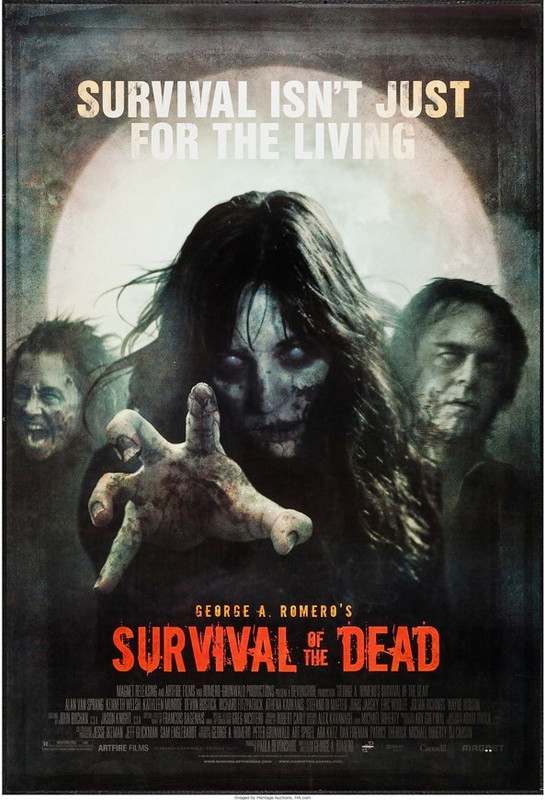
|
|
|
|
|
|
|
|
|
 |
 |
 |
Posted: |
Jul 17, 2017 - 11:42 PM
|
|
|
|
By: |
GoblinScore
(Member)
|
Thanks for the work on these tributes, Bob. You always do a really good job on these, and I don't know if anyone ever says as much.
I wish Romero had enjoyed a better time with his career - I remember endless Fangoria updates of upcoming projects that never came to fruition. I respected his will to buck the system, and alternately feel some pity things went the ways they did.
In spite of certain flaws (which never bothered me - said flaws gave his work a charm IMO), I enjoy all his films quite often.
I think he was ahead of his time in many ways - for one example, think of his quick cutting style in DAWN '78, something I feel that has been mimicked (sadly, to lesser effect in less skilled hands) in the past decade or so. The fact he was a film music fan (I would have loved to chat about that subject awhile!) just endeared me to his work even more. I hope in retrospect, people look beyond the gore & extremes in his films, and see how much more he had to offer.
I'm glad forums like this exist, this is a tough one to lose, for me....
 |
|
|
|
|
|
|
|
|
|
 |
RIP
I have only seen The Dark Half of the films he directed. Great film.
|
|
|
|
|
|
|
|
|
|
|
|
|
|
|
|
|
|
|
 |
 |
 |
|
|
 |
 |
 |
| |
|
|
|
 |
|
 |
|
|
|


